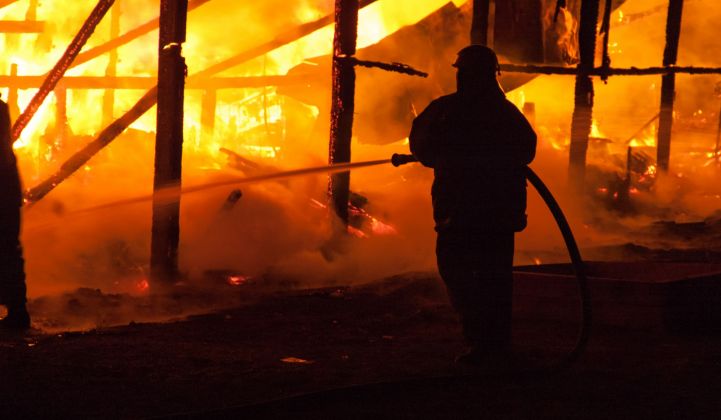Pacific Gas & Electric has tapped out its revolving credit facilities for more than $3 billion, a move the utility said would provide it “greater financial flexibility” as it faces questions about liability for wildfire damage.
In a Tuesday filing with the U.S. Securities and Exchange Commission, PG&E and parent company PG&E Corp. revealed that they have borrowed all cash available under their revolving credit facilities of $3.0 billion and $300 million, respectively. The move increased the companies’ balance of cash and cash equivalents to approximately $356 million and $3.1 billion, respectively.
PG&E said it plans to invest the cash proceeds from the borrowings in “highly liquid short-term investments and to use them for general corporate purposes, including upcoming debt maturities.”
But financial analysts noted that the move could be a precursor to a decision to file for bankruptcy protection, given PG&E’s exposure to as much as $15 billion in wildfire liabilities from last year’s devastating wildfires, and the potential that it will be found at fault for starting the Camp Fire last week.
PG&E shares have lost nearly half their value since the Camp Fire broke out last week, from nearly $50 last Wednesday to as low as $27 in Wednesday morning trading. The company reported a $1 billion net loss in the second quarter of this year, driven by nearly $1.6 billion in wildfire costs, and net income of $550 million for the third quarter.
In 2017, state investigations found that PG&E lines were the cause of several fires that killed at least 15 people and razed over 5,000 homes last fall. But state fire investigators have not yet determined the utility’s culpability in the Tubbs Fire, which killed 23 people and destroyed nearly 5,600 structures in California wine country, where losses could top $10 billion.
As for the Camp Fire, a PG&E filing last week stated that on Thursday at about 6:15 a.m., the utility “experienced an outage on the Caribou-Palermo 115 kV transmission line in Butte County,” about 20 minutes before the Camp Fire was first reported. The fire has become the state’s most deadly, with at least 48 people killed and more than 100 still missing and feared dead, and 8,800 structures burned and thousands more threatened.
PG&E also reported that it canceled a planned outage in the area on Thursday to reduce the risk of power lines starting fires.
On Tuesday, a lawsuit was filed against PG&E on behalf of Camp Fire victims, claiming that its failure to properly maintain equipment was the cause of the fire. PG&E responded with a statement saying that the cause of the fire has not yet been determined, and that it is focused on recovering from the disaster.
California’s legislature passed a law in September that could protect PG&E from some of the financial liabilities from last year’s wildfires. But the law does not make the same provisions for financial liabilities occurring this year.
PG&E reported Tuesday that it has about $1.4 billion for the period from August 1, 2018 through July 31, 2019. But it also warned of bigger financial consequences: "While the cause of the Camp Fire is still under investigation, if the Utility’s equipment is determined to be the cause, the Utility could be subject to significant liability in excess of insurance coverage that would be expected to have a material impact on PG&E Corporation’s and the Utility’s financial condition, results of operations, liquidity, and cash flows.”




